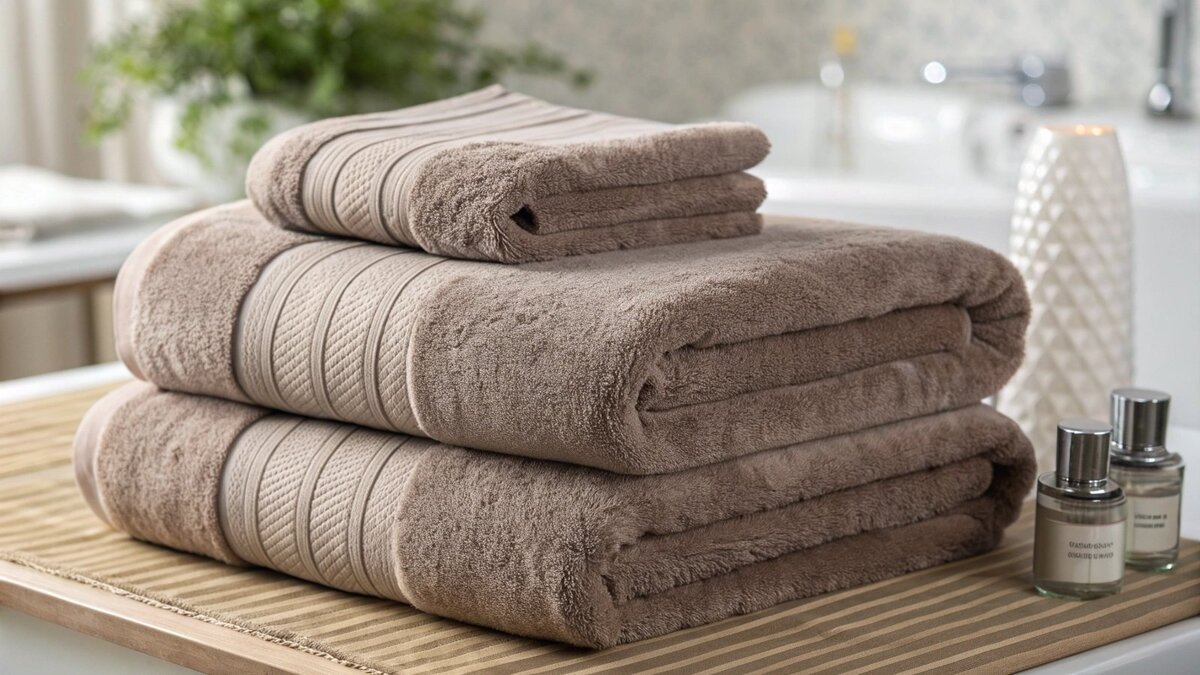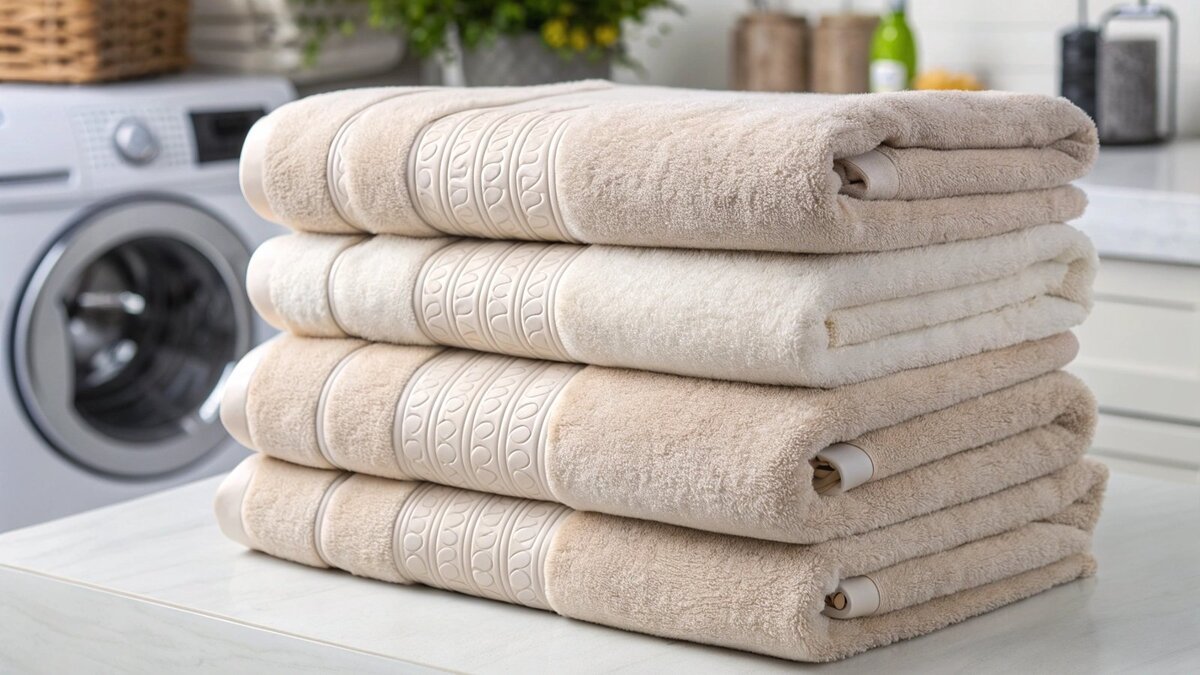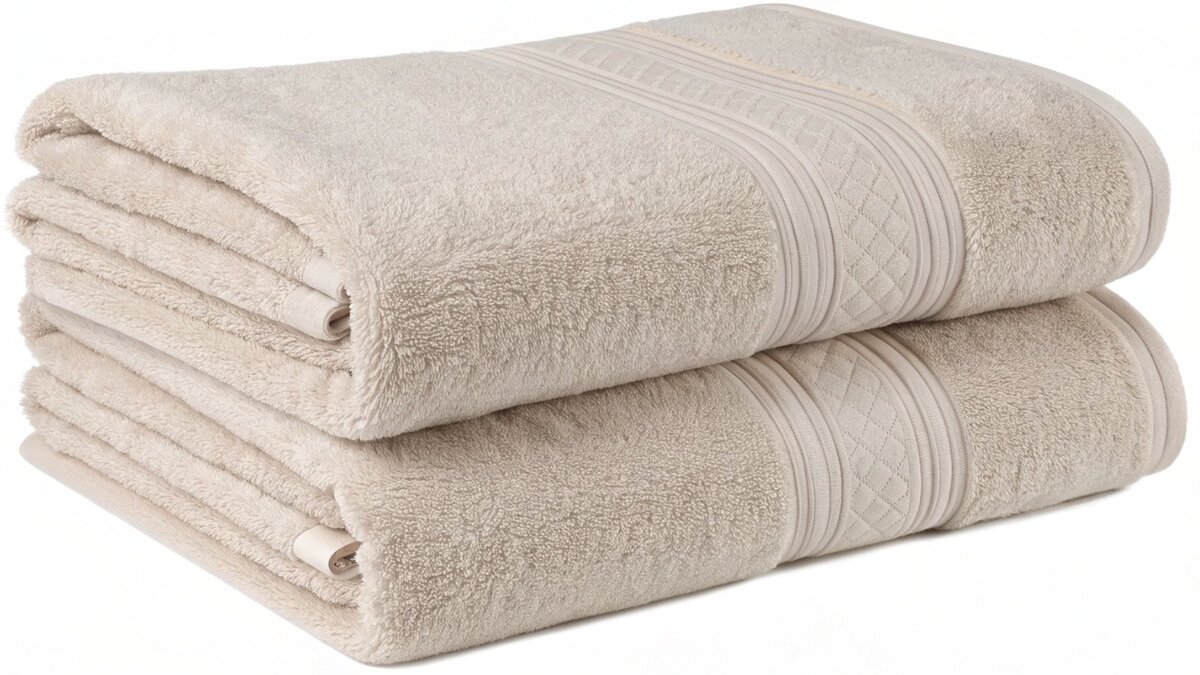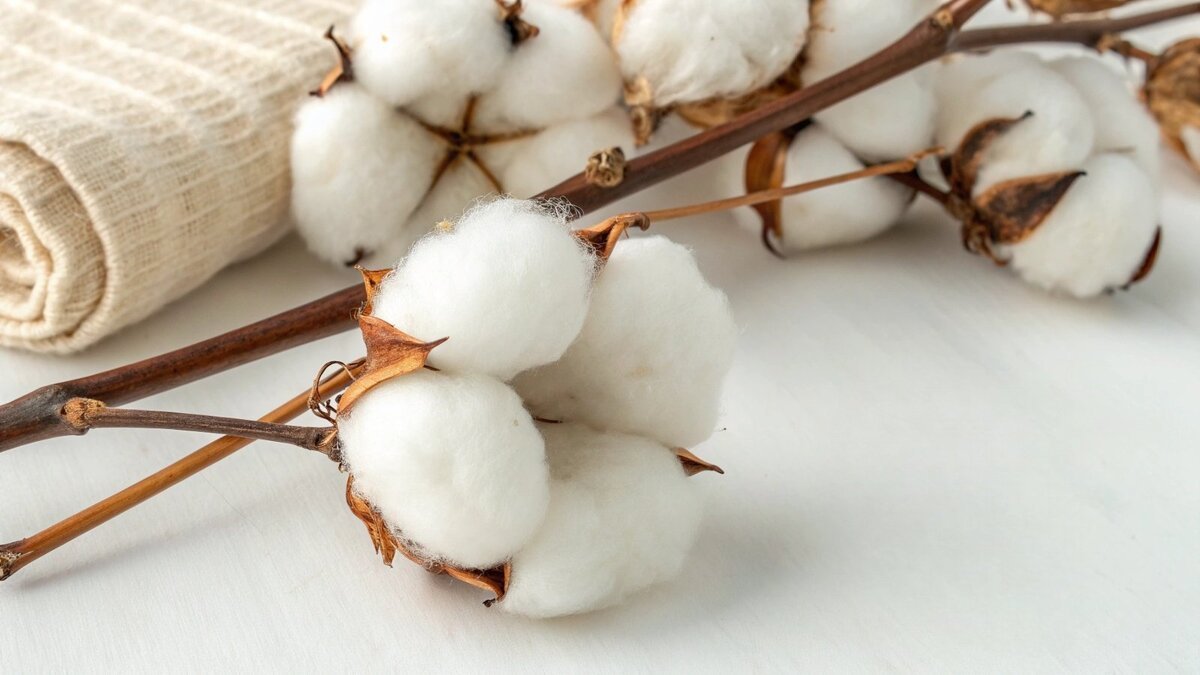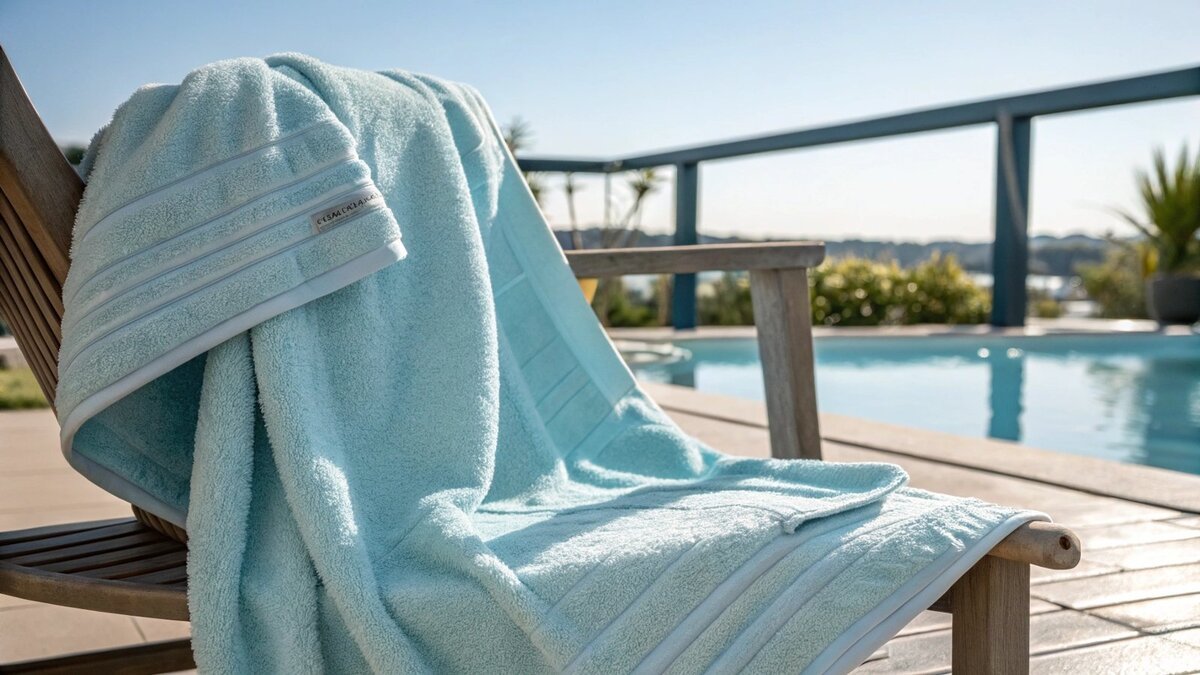Choosing the right cotton feels overwhelming. Pick the wrong one, and you’re stuck with rough, weak towels. Combed ring spun cotton offers a clear path to premium quality.
Combed ring spun cotton is a luxury-grade material. The combing process removes short fibers, and ring-spinning creates a stronger, smoother yarn. This results in towels that are exceptionally soft, durable, and absorbent, justifying a higher price point and enhancing your brand’s reputation for quality.
As a towel manufacturer since 2004, I’ve seen firsthand how this one material choice can make or break a product line. Many of my clients, from boutique hotel suppliers to fast-growing online brands, come to me with the same questions about it. They want to know what they’re really paying for and if the benefits are worth it. Let’s break down the most common questions I get, so you can make a confident decision for your business.
Will 100% Combed Ring Spun Cotton Shrink?
Worried your premium towels will shrink after the first wash? This damages your brand’s reputation and leads to customer complaints. Understanding the fabric’s properties is your best defense.
Yes, all-natural cotton can shrink. However, 100% combed ring spun cotton, especially when professionally pre-shrunk during manufacturing, shrinks minimally. At TowelTrend, we control this process meticulously to ensure your towels maintain their size, shape, and luxurious feel wash after wash.
The fear of shrinkage is a major concern for any brand selling textile products. I’ve had many purchasing managers tell me about bad experiences with towels that looked great on arrival but became small and misshapen after just one wash cycle. That’s a quick way to get returns and bad reviews.
Why Cotton Shrinks
Cotton fibers are stretched and put under tension during the weaving process. When you wash the fabric in warm water, this tension is released, and the fibers relax back to a more natural, shorter state. This is what causes shrinkage. It’s a natural property of the material.
How We Manage Shrinkage
The key isn’t to find a cotton that never shrinks, but to work with a manufacturer who controls the shrinkage before the product ever gets to your customer. This is where pre-shrinking, or sanforizing, comes in. We run the finished fabric through a machine that uses water, steam, and pressure to force the shrinkage to happen in our factory, not in your customer’s washing machine.
| Treatment | Expected Shrinkage | Product Consistency |
|---|---|---|
| Untreated Cotton | 5-10% | Poor |
| Pre-shrunk (Sanforized) | 1-3% | Excellent |
By managing this, we can confidently promise our clients that their combed ring spun cotton towels will have a negligible shrinkage rate of less than 3%. This is a critical quality control step for any premium towel program and a standard part of our factory-to-door turnkey service.
Is Combed Ring Spun Cotton Soft?
Customers complain that towels feel amazing at first but turn rough over time. This leads to poor reviews. Lasting softness is what separates premium products from the rest.
Absolutely. Combed ring spun cotton is famous for being exceptionally soft, and it stays soft. The combing process removes short, scratchy fibers, while ring-spinning creates a uniform, silky-smooth yarn. This results in a towel that offers a truly luxurious feel against the skin.
When a new buyer is trying to decide on a towel line, "softness" is always at the top of their list. But not all softness is created equal. Some towels feel soft in the package because of chemical softeners that wash out, leaving a rough and disappointing product. True, lasting softness comes from the quality of the yarn itself. That’s where combed ring spun cotton shines.
Let’s break down the two key processes:
- Combing: Think of combing your hair. It removes snarls and short, broken strands. The same thing happens to cotton. Fine-toothed combs pass through the raw cotton, pulling out any short fibers and impurities. This leaves only the longest, strongest, and smoothest fibers to be spun into yarn.
- Ring-Spinning: This traditional method twists and thins the cotton strands into a very fine, strong, and soft rope of fibers. It’s a slower, more deliberate process than "open-end" spinning, which is faster but results in a coarser, weaker yarn.
Here’s how they compare:
| Feature | Carded Open-End Cotton | Combed Ring Spun Cotton |
|---|---|---|
| Fiber Length | Short & long mixed | Only long, uniform fibers |
| Yarn Feel | Coarser, hairier | Smoother, silkier |
| Durability | Lower | Higher |
| Pilling | More likely | Resists pilling |
I remember a client in Australia who was launching a luxury spa brand. They started with a cheaper carded cotton towel to save on their initial order. After their launch, they got feedback that the towels "lost their magic" after a few washes. We switched them to our combed ring spun cotton towels for their next order, starting with our low MOQ of 500 pieces. Their customer reviews immediately improved, and "incredibly soft" became their most common compliment. The investment in better yarn paid off directly in brand perception and customer loyalty.
Is Combed Cotton Natural or Synthetic?
Meeting the demands of eco-conscious customers can be tricky. Using the wrong fiber type can alienate buyers who value natural, sustainable products. Clear material knowledge is essential.
Combed cotton is 100% natural. It comes directly from the cotton plant. The terms "combed" and "ring spun" describe mechanical processes that enhance the natural fibers. They do not involve adding any synthetic materials like polyester or nylon, ensuring a pure and biodegradable product.
This is a question I get a lot, especially from brands targeting wellness and sustainability markets in Europe and North America. They need to be certain about their product’s origin and composition. The good news is, combed cotton is as natural as it gets.
From Plant to Premium Yarn
The entire journey starts in a field.
- Harvesting: Raw cotton is picked from the cotton plant.
- Ginning: The fibers are separated from the seeds.
- Carding: The fibers are aligned into loose strands.
- Combing: This extra step (which is skipped for standard cotton) removes short fibers.
- Spinning: The combed fibers are spun into yarn.
At no point are artificial materials introduced. This is why we can confidently provide a full certification packet, including OEKO-TEX Standard 100. This certification guarantees that every component of the towel has been tested for harmful substances. It’s a promise of natural quality you can pass on to your customers.
| Fiber Type | Origin | Absorbency | Breathability |
|---|---|---|---|
| Combed Cotton | Natural (Plant) | High | High |
| Polyester | Synthetic (Petroleum) | Low | Low |
| Microfiber (Polyester/Polyamide) | Synthetic | High (but different feel) | Moderate |
For a towel, you want high absorbency. Cotton’s natural cellulose fibers are hydrophilic, meaning they love water. Synthetic fibers like polyester are hydrophobic—they repel water. While some gym towels use blends for quick-drying properties, for a premium bath or beach towel, nothing beats the absorbent, natural feel of 100% cotton.
Is Combed Cotton Good for Summer?
Need a towel that performs well in hot, humid weather? A heavy, slow-drying towel can be a real turn-off for customers at the beach or pool.
Yes, combed cotton is excellent for summer. Its natural fibers are highly absorbent, perfect for drying off after a swim. It’s also very breathable, which allows the towel to dry relatively quickly in the sun and feel light and comfortable, even in humid conditions.
When my clients prepare for their spring/summer collections, we always discuss the right towel specifications for beach, pool, and travel use. The material must be absorbent, quick-drying enough, and feel good on warm skin. Combed cotton checks all these boxes.
Absorbency and Breathability
Combed cotton’s long, smooth fibers create a dense but not heavy weave. The natural structure of cotton allows air to pass through, which is what we mean by "breathability." This airflow is crucial for two reasons:
- Faster Drying: It helps moisture evaporate more quickly than a very dense, non-breathable fabric.
- Comfort: It prevents that sticky, clammy feeling you can get from synthetic towels in the heat.
Choosing the Right Weight (GSM)
The key to a perfect summer towel is balancing absorbency with weight. We measure this in Grams per Square Meter (GSM). A higher GSM means a denser, heavier, and more absorbent towel. For summer, you don’t want it too heavy. I usually advise my clients on a mid-range GSM for their beach towel collections.
| Use Case | Recommended GSM | Characteristics |
|---|---|---|
| Luxury Bath Towel | 600-900 GSM | Thick, plush, highly absorbent |
| Beach/Pool Towel | 400-600 GSM | Good balance of absorbency and portability |
| Gym/Travel Towel | 300-400 GSM | Lightweight, very compact, dries quickest |
A combed cotton towel in the 450-550 GSM range is often the sweet spot for a premium summer product. It feels substantial and luxurious without being too bulky to carry to the beach or taking forever to dry. It delivers on the performance your customers expect during the warmer months.
Conclusion
In short, combed ring spun cotton delivers superior softness, durability, and natural quality. It is the smart choice for premium brands looking to satisfy customers and grow their business.

